
The junk box
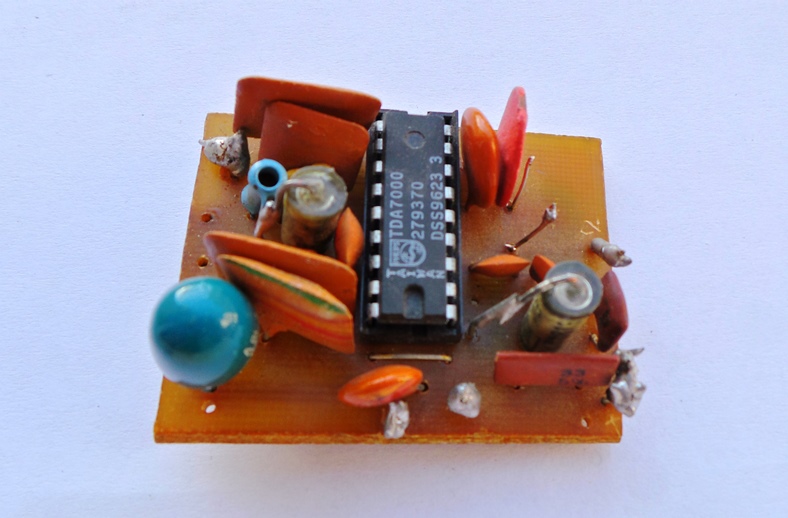 FM receiver with TDA7000
FM receiver with TDA7000
This ugly board is my oldest creation that survived. It dates back to 1993. It is an FM receiver with TDA7000. Philips was still making ICs back then. Only 4 years after the end of the communist era the electronic components were still hard to find. I think there are 2 paper capacitors there! My father had to make a trip to Bucharest and I asked him to buy the chip from there. The schematic was published in a log defunct electronic magazine. No internet back then.
The audio amplifier was on a separate board with a TBA810, an ancient audio IC made at IPRS, a long gone Romanian semiconductors factory. The radio worked from the first try to my great surprise. There weren’t many things to adjust since it has a 70kHz IF and all stages are integrated in the chip. But nevertheless it felt like a great achievement.
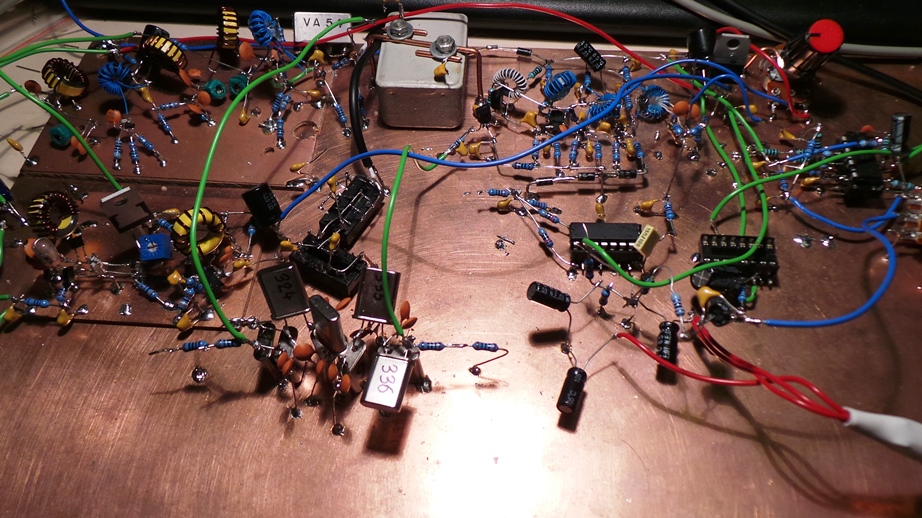
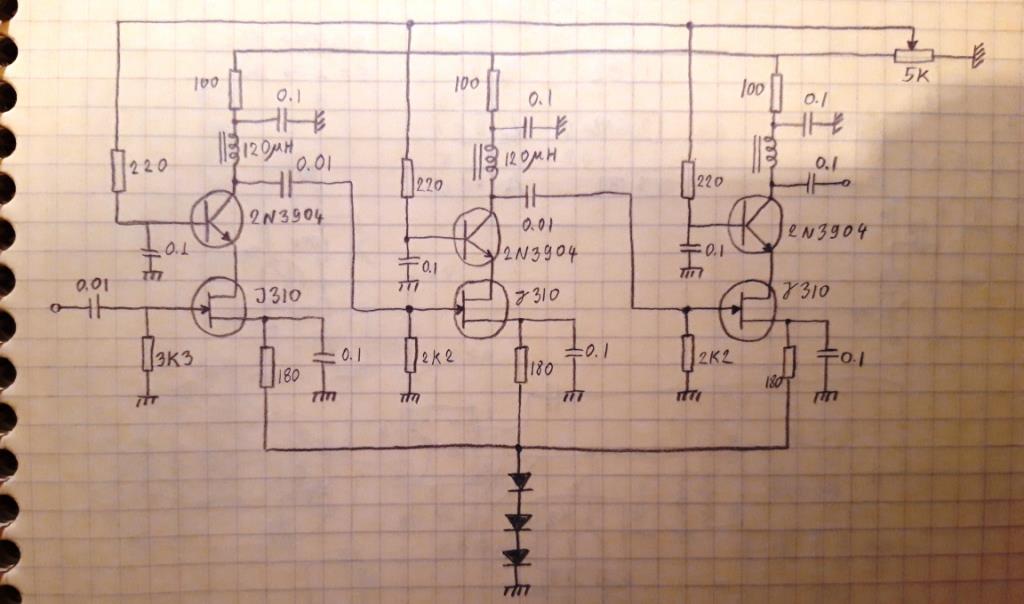
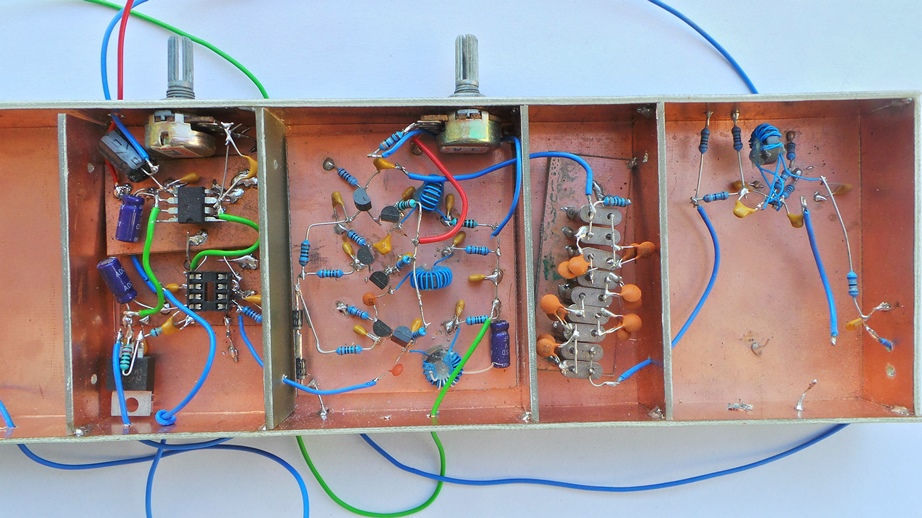 Unintended radio receiver
Unintended radio receiver
This project had a strange life. First I wanted to try an RF RX amplifier from “Experimental methods in RF design” book. A classic type of bipolar transistor biased for high current with negative feedback and a 2:1 transformer in collector. A little later I wanted to make a ladder style crystal filter. There is a great article about this in ARRL handbook 2013 edition.
Since there was plenty of space on the cooper board I made the filter there. You can see the 10 crystals at the bottom of the picture. I was very pleased with the result. The filter had excellent selectivity and reasonable pass band attenuation. At this point I start to think to add the missing parts to build a single conversion super-heterodyne receiver.
I used my favorite SRA-3H high level mixer followed by a post mixer amplifier to keep a proper 50ohm termination. Then I got an IF amplifier idea from a QST article. It is a chain of 3 cascode stages. The mix of bipolar and J-fet transistors maintain the gain even when the supply goes below 12V unlike the case when only J-fet transistors were used.
The VFO is tuned by varicap diodes with a 10 turn potentiometer. The signal is squared with a MC4046 and then goes to 6 inverting gates connected in parallel.
From the beginning I noticed that all the stages were working fine when tested alone, but when put together the sensitivity was very poor. A quick inspection showed that the wide band IF amplifier was saturated with signal radiated from VFO. There was no shielding and high current square waves from VFO were way to strong.
So the second version appeared, with shielded compartments. It was quite a lot of work to make that box from pieces of PCB. That was before I discovered the aluminum cast Hammond boxes.
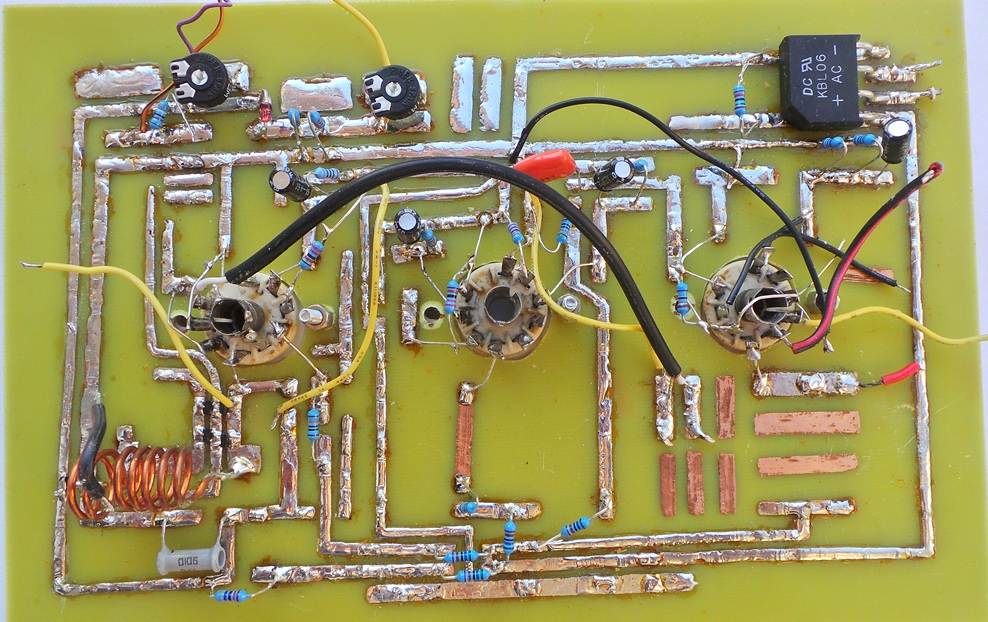
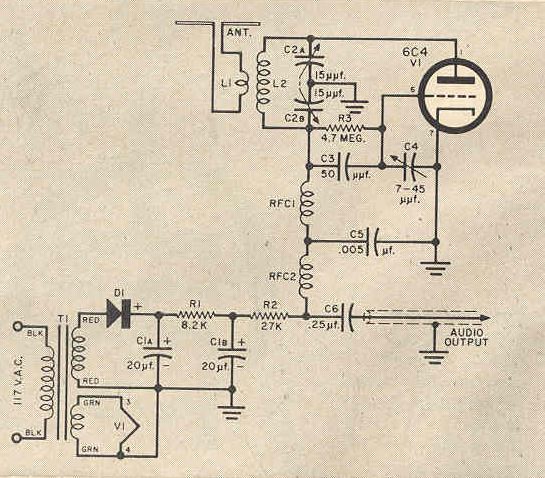 Super-regenerative tube FM radio
Super-regenerative tube FM radio
Somewhere in the late 2000’s the super-regenerative receivers started to drew my attention. I was intrigued by the ingenuity of the design. Basically it is a positive feedback amplifier that is kept as close as possible to the oscillation threshold. In this point the amplification is highest, much more that could be obtain with a similar amplifier without feedback. Also the selectivity of the tuned circuit is magnified by the positive feedback.
So far it is just a regenerative receiver. But what makes this design special is that the amplifier/oscillator is interrupted with a frequency of a few teens of kHz. This causes the gain to increase up to x1000000. With a single device!
The FM signal is demodulated with slope detection. And indeed I could receive a station in two places very close to each other. Initially I used a low noise AF amplifier. I could receive all FM station from the city with a 2m indoor antenna. And back then I was living in an apartment so shielded that I barely had GSM signal inside.
The board is a second design when I tried to replace the solid state AF amplifier with 2 triodes 6N1P. Unfortunately this high gain AF amplifier was very noisy. It picked hum from everywhere and there was no way to cure it. So I scrap the board. The complete article of the receiver can be found here: Super-regenerative tube FM radio

